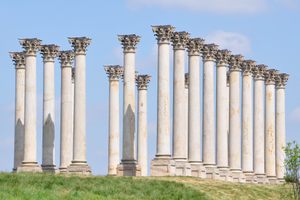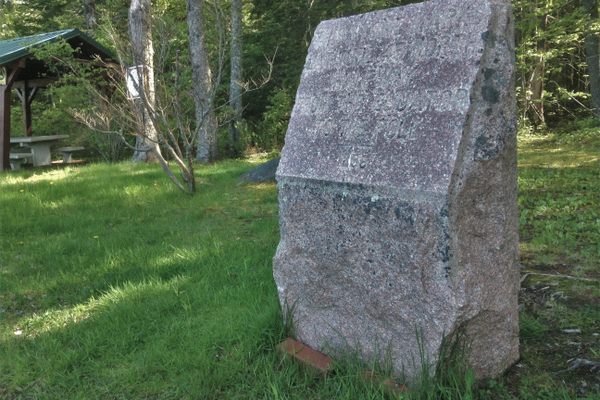About
In the early days of the American republic, upstart patriots briefly pushed for the location of a navigational meridian passing through central Washington, D.C. This was a time before the international Prime Meridian at Greenwich was established, and many countries based their maps off prime meridians passing through their territory.
Secretary of State Thomas Jefferson, ever intrigued by surveying, was a key player in the push. To choose the exact location of the latitudinal line, he lined up the White House front door with the Capitol rotunda in 1793, an intersection he marked with a small wooden post, steps from the present-day Washington Monument.
Eleven years later, Jefferson was president, and the wooden post was replaced with a stone block capped with Aquia sandstone. The Washington Post archive notes grandly that this point was “to serve as a first meridian from which to reckon longitudes in the very young and patriotic republic” for years to come.
That proved overly optimistic, however, and Jefferson’s stone was forgotten about within a few decades. In 1872 work was progressing on the Washington Monument, and the original stone was removed by General Babcock of the Army Corps of Engineers, who was oblivious of the history. Jefferson’s meridian dreams were smashed for good in 1884 when President Arthur convened a conference at the State Department to settle on one common international line.
Debate at the Meridian Conference was heated, with the strongest opposition to the English meridian coming from French representatives, who took a "Never Greenwich!” position. (The French favored the neutral but impractical Bering Straits). Economic expediency ultimately carried the day. Greenwich’s Royal Observatory already had astronomical equipment on site, so it was cheaper for all involved to convert their measurements to GMT. (The vote was 21 to 1, with France and Brazil abstaining.)
Five years later, a stone pier was re-erected at the site of the original Jefferson marker.
Update July 2018: The Washington monument is closed until 2019 for repairs. There is a fence and you can’t get close to this marker due to its proximity to the monument undergoing restoration.
Related Tags
Know Before You Go
Two minutes from the Washington Monument (at the exact intersection of the White House and Capitol).
Community Contributors
Added By
Published
May 2, 2017
Sources
- Boundary stones Washington erected here still stand, Washington Post, June 28, 1931
- The Prime Meridian Conference, Washington Post, September 20, 1884
- Greenwich Meridian or none, Washington Post, October 3, 1884
- France Will Never Consent, Washington Post, October 8, 1884
- The Greenwich Meridian selected, Washington Post, October 14, 1884























































